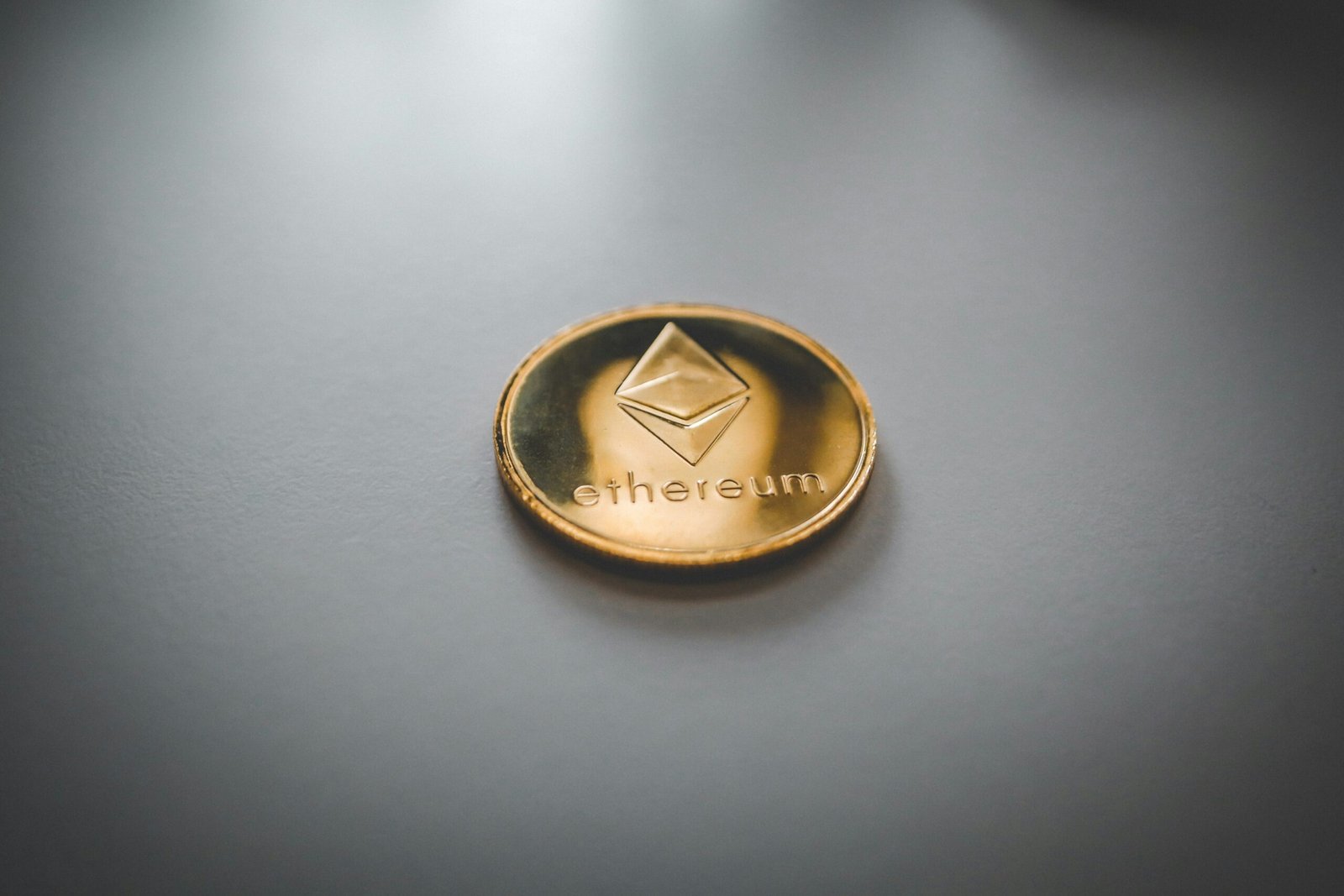Understanding Tether’s Role in the Cryptocurrency Ecosystem
Tether, commonly denoted as USDT, is a leading stablecoin in the cryptocurrency market, designed to maintain a 1:1 peg with the US dollar. Unlike traditional cryptocurrencies that can experience significant price volatility, Tether offers the stability that investors seek amidst the rapid fluctuations synonymous with digital currencies. Its primary purpose is to serve as a medium of exchange within the crypto ecosystem, providing liquidity and facilitating trades, which can be particularly beneficial during moments of market downturns.
The importance of Tether in the cryptocurrency market cannot be overstated. As a stablecoin, it substantially reduces the risk associated with trading digital assets, allowing investors to safeguard their assets in times of uncertainty. Its capability to provide a safe harbor means that traders can convert their volatile assets into USDT when they anticipate market declines, effectively preserving their capital until better trading opportunities arise. This feature of acting as a hedge against market fluctuations enhances its appeal to both retail and institutional investors.
As of June 7, 2025, the current price of Tether is approximately $1.00. This stable price reflects Tether’s design and its operational mechanisms that aim to maintain its peg with the US dollar. While USDT is not subject to the same level of market speculation as more volatile cryptocurrencies, analyzing its price status provides valuable insights into broader market trends and investor sentiment. With a daily trading volume in the billions, USDT’s liquidity is crucial for traders dealing with cryptocurrencies across exchanges.
Investors contemplating whether to buy or not buy Tether should consider its functional value as a secure asset. Maintaining a stablecoin like Tether in one’s portfolio can be advantageous during periods of extreme market volatility, acting as a buffer against potential losses from other investments. While its price has remained relatively stable, it is essential to evaluate market conditions and the macroeconomic environment before making any investment decisions.
In conclusion, Tether plays a vital role in today’s cryptocurrency landscape, serving as a reliable anchor for both individual and institutional investors. The stable nature of USDT provides essential liquidity and mitigates risks associated with market fluctuations, making it a pragmatic choice for many. As the crypto market continues to evolve, keeping abreast of Tether’s price movements and market trends will be critical for informed investment strategies.
Current Price Status of Tether (June 7, 2025)
As of June 7, 2025, the price of Tether (USDT) remains relatively stable, trading at approximately $1.00. The nature of Tether, being a stablecoin, is to maintain a 1:1 peg with the US dollar, making it a favorite among traders looking to mitigate volatility in the cryptocurrency market. Over the past weeks leading to this date, Tether has displayed minimal fluctuations, oscillating between $0.99 and $1.01, indicating strong market confidence in its structural integrity.
The trading volume of Tether has seen an uptick, reflecting increased interest and usage in various transactions. Particularly, the beginning of June highlighted a surge in adoption as several major exchanges expanded their liquidity. This adaptability suggests that Tether is maintaining its position as a reliable medium for investors looking to park their funds temporarily, thus influencing transaction frequency and overall trading dynamics across crypto markets.
External factors contributing to Tether’s price stability include regulatory developments and changes in market sentiment. Recent announcements by governmental bodies regarding crypto regulations have bolstered confidence among investors, leading to a more favorable trading environment. Additionally, increased activity from institutional investors seeking safe havens in uncertain market conditions has fortified Tether’s reliability as a store of value.
Statistical analysis indicates that Tether’s price has exhibited a consistent trend over recent months, with a slight increase in demand correlating with overall market recoveries in the cryptocurrency sector. The sustained stability underscores Tether’s utility in providing liquidity while offering a hedge against market volatility. At present, these dynamics contribute positively to Tether’s overall resilience in the face of broader economic changes.
Given the current price status and trading trends of Tether, potential investors may find it prudent to engage with this stablecoin. While Tether is unlikely to deliver significant price gains due to its nature, it presents a low-risk opportunity for preserving capital or facilitating transactions. In light of the current economic conditions and trading patterns, integrating Tether into an investment strategy may prove beneficial for both new and seasoned traders.
Tether Price Trends: Understanding Current Market Dynamics
As of June 7, 2025, Tether (USDT) maintains a price of approximately $1.00, reflective of its design as a stablecoin aimed at minimizing volatility in the crypto market. The price of Tether has experienced minor fluctuations between $0.99 and $1.01 over the past two weeks, which is typical for a stablecoin pegged to the US dollar. Such tight price control is a feature intended to instill confidence among investors and traders, especially during times of market volatility.
Correlation with Major Cryptocurrencies
Tether’s performance exhibits a notable correlation with Bitcoin and other leading cryptocurrencies. Analysts highlight that during periods of crypto market expansion, Tether often sees increased trading volume as investors convert fiat into digital assets, consequently affecting Tether’s circulation. In recent weeks, an increase in Bitcoin trading activity has led to a corresponding rise in Tether’s transaction volumes, reinforcing its status as a go-to option for investors seeking to navigate the volatile landscape of cryptocurrencies.
Market Capitalization Insights
The current market capitalization of Tether is approximately $83 billion, securing its position as the largest stablecoin in the market. This market cap is indicative of strong investor confidence and substantive use in exchanges. Comparatively, Tether retains a significant portion of the stablecoin market share, making it a reliable indicator of market conditions. Such statistics underline Tether’s importance in the cryptocurrency ecosystem, particularly for those looking to maintain liquidity while minimizing risks.
Trading Volume Analysis
The trading volume for Tether remains robust, with an average daily trading volume exceeding $25 billion. This high volume reflects the coin’s liquidity levels and suggests that Tether is widely accepted across various exchanges, providing users with ample opportunities for trading and investment decisions. Traders often utilize Tether to hedge against market downturns, underlining its utility as a risk management tool in a trader’s portfolio.
Investment Recommendations Based on Current Tether Status
Given Tether’s stability and its intrinsic function as a safe harbor amid crypto market fluctuations, the current price point suggests that buying Tether may be a prudent option for investors looking to stabilize their holdings. Considering its near-constant value of approximately $1.00, purchasing Tether allows for a strategic buffer against market volatility. The prevailing circumstances advocate for cautious investment to facilitate entry into potentially more volatile assets, particularly as the trends indicate a stable performance amid an ever-evolving market landscape.
In conclusion, Tether continues to serve as a pivotal element in the cryptocurrency market. With its stable price point, extensive trading volume, and significant market capitalization, it remains a prominent choice for both investors and traders navigating the complexities of digital finance.
Investment Considerations for Tether
As of June 7, 2025, Tether (USDT) has been trading at approximately $0.99, reflecting its status as a stablecoin. Given its nature, Tether’s price is designed to maintain a one-to-one ratio with the USD, making it a popular choice for traders looking to hedge against volatility in other cryptocurrencies. However, prospective investors should examine both market trends and individual circumstances before making any decisions regarding purchasing or holding Tether.
Current Market Trends Affecting Tether
The cryptocurrency market is characterized by fluctuating prices and rapid shifts in investor sentiment. Currently, there is a mixed outlook for Tether, as some analysts suggest it can act as a safe haven during bearish market conditions. Investors should observe trends in stablecoins as a whole, considering how macroeconomic environments, such as inflation rates and global economic stability, can affect cryptocurrency investments. Understanding these factors is crucial in determining whether buying Tether at its current price aligns with a larger investment strategy.
Assessing Your Risk Tolerance
Investors must evaluate their risk tolerance before committing to any cryptocurrency, including Tether. Although USDT is intended to be stable, extraordinary market conditions can lead to unexpected fluctuations. Individuals should consider their financial circumstances, investment goals, and capacity to endure potential losses. If maintaining the value, regardless of market pressures, is a priority, acquiring Tether might be suitable. Conversely, those seeking higher returns may choose to explore alternative cryptocurrencies with more volatile performance.
Potential Alternatives to Tether
For those contemplating whether to buy Tether, exploring other cryptocurrencies might present additional opportunities. Assets such as USDC, BUSD, or DAI offer similar functionalities as stablecoins, potentially influenced by different market conditions. It is worth researching these alternatives if an investor is unsatisfied with the current USDT price or outlook. Diversification into various stablecoins can mitigate risks associated with relying solely on Tether.
Conclusion: Should You Buy Tether?
Ultimately, the decision to buy Tether should be based on comprehensive analysis and aligned with personal investment strategies. The current price nearly at par with USD can be appealing for risk-averse investors looking to safeguard their portfolios amid volatility. In conclusion, assessing market sentiment, personal risk tolerance, and potential alternatives can provide valuable insights into whether to invest in Tether or explore other options in the cryptocurrency market.



